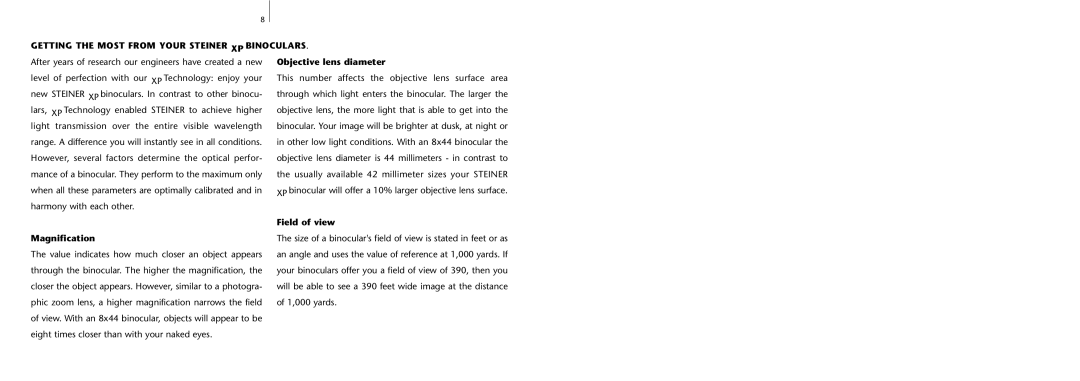8
GETTING THE MOST FROM YOUR STEINER XP BINOCULARS.
After years of research our engineers have created a new level of perfection with our XP Technology: enjoy your new STEINER XP binoculars. In contrast to other binocu- lars, XP Technology enabled STEINER to achieve higher light transmission over the entire visible wavelength range. A difference you will instantly see in all conditions. However, several factors determine the optical perfor- mance of a binocular. They perform to the maximum only when all these parameters are optimally calibrated and in harmony with each other.
Objective lens diameter
This number affects the objective lens surface area through which light enters the binocular. The larger the objective lens, the more light that is able to get into the binocular. Your image will be brighter at dusk, at night or in other low light conditions. With an 8x44 binocular the objective lens diameter is 44 millimeters - in contrast to the usually available 42 millimeter sizes your STEINER XP binocular will offer a 10% larger objective lens surface.
Field of view
Magnification
The value indicates how much closer an object appears through the binocular. The higher the magnification, the closer the object appears. However, similar to a photogra- phic zoom lens, a higher magnification narrows the field of view. With an 8x44 binocular, objects will appear to be eight times closer than with your naked eyes.
The size of a binocular's field of view is stated in feet or as an angle and uses the value of reference at 1,000 yards. If your binoculars offer you a field of view of 390, then you will be able to see a 390 feet wide image at the distance of 1,000 yards.
